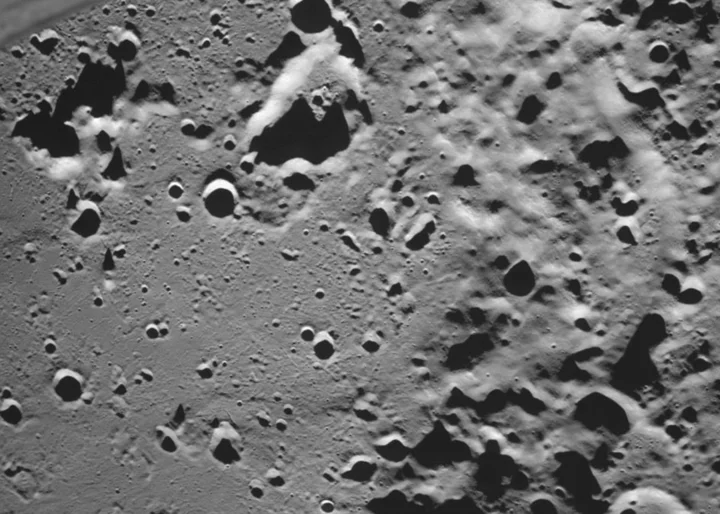India's robotic spacecraft has beamed back intriguing close-up views of the moon as it gets ever-closer to its planned landing attempt.
The moonscapes capture the heavily cratered far side, which faces away from Earth. They were taken by a camera that will assist India in finding a safe landing spot — without boulders or deep trenches — during its descent.
The Indian Space Research Organization released the four images Sunday, the same day Russia announced it had lost contact with its Luna-25 spacecraft, which was also slated to land on the moon this week. The two nations were in a race to set their crewless space probes down at the dark lunar south pole, an unprecedented feat. But the challenge is so daunting, spectators have braced for the possibility that neither will succeed.
"So disappointing for all the scientists, engineers and explorers to see Luna 25 crash," said former astronaut Chris Hadfield on X.com, the site formerly known as Twitter.
SEE ALSO: Right now 2 nations are racing to the moon to land at the south poleSince Roscosmos is now out of the running, its spacecraft apparently having crashed because of an orbital maneuver gone wrong, all eyes are on India and its Chandrayaan-3 mission. The spacecraft is scheduled to land Wednesday, Aug. 23.
When will India try to land on the moon?
The public will be able to watch a live broadcast of the landing attempt on the agency's website, Facebook page, and Youtube channel beginning at 7:50 a.m. ET on Wednesday, Aug. 23. (Indian Standard Time is 9 ½ hours ahead of Eastern Time). If the landing sequence goes as planned, the spacecraft could touch down at 8:34 a.m. ET, according to updates on X.com.
Want more science and tech news delivered straight to your inbox? Sign up for Mashable's Light Speed newsletter today.
India's robotic spacecraft has beamed back intriguing close-up views of the far side of the moon. Credit: ISRO This moonscape captures the heavily cratered far side, which faces away from Earth. Credit: ISROIndia is no stranger to getting a spacecraft into lunar orbit — this is its third time doing so successfully. But its next big challenge will be sticking a landing, something the space agency has yet to achieve. The mission follows India's Chandrayaan-2, which ended abruptly when the spacecraft crashed during its landing attempt in 2019.
If India succeeds, it will become only the fourth nation to land on the moon, joining the ranks of the former Soviet Union, the United States, and China.
Over the past four years, the private sector and other spacefaring nations have tried and failed to land on the moon with crewless spacecraft. An Israeli nonprofit and company collaborated in 2019 on the Beresheet mission, which crashed on the lunar surface after an orientation component failed. Just this April, Japanese startup ispace ran out of fuel and crashed as it tried to land. Fuel is crucial for firing thrusters to slow down during the descent.
This moonscape was taken by a camera that will assist India in finding a safe landing spot — without boulders or deep trenches — during its descent. Credit: ISRO The public will be able to watch India's Chandrayaan-3 mission attempt to land at the moon's south polar region on a live broadcast beginning at 7:50 a.m. ET on Wednesday, Aug. 23. Credit: ISROThough 60 years have passed since the first uncrewed moon landings, touching down safely remains difficult, with less than half of all missions succeeding. Unlike around Earth, the moon's atmosphere is very thin, providing virtually no drag to slow a spacecraft down as it approaches the ground. Furthermore, there are no GPS systems on the moon to help guide a craft to its landing spot. Engineers have to compensate for these shortcomings from 239,000 miles away.
If India lands successfully, it will not only position the nation as a leader in space exploration but contribute to the beginning of a new era in developing the moon as a hub for deeper space travel and a burgeoning economy. The region's ice, thought to be buried in the polar craters, could supply drinking water, air, and rocket fuel for future missions.









